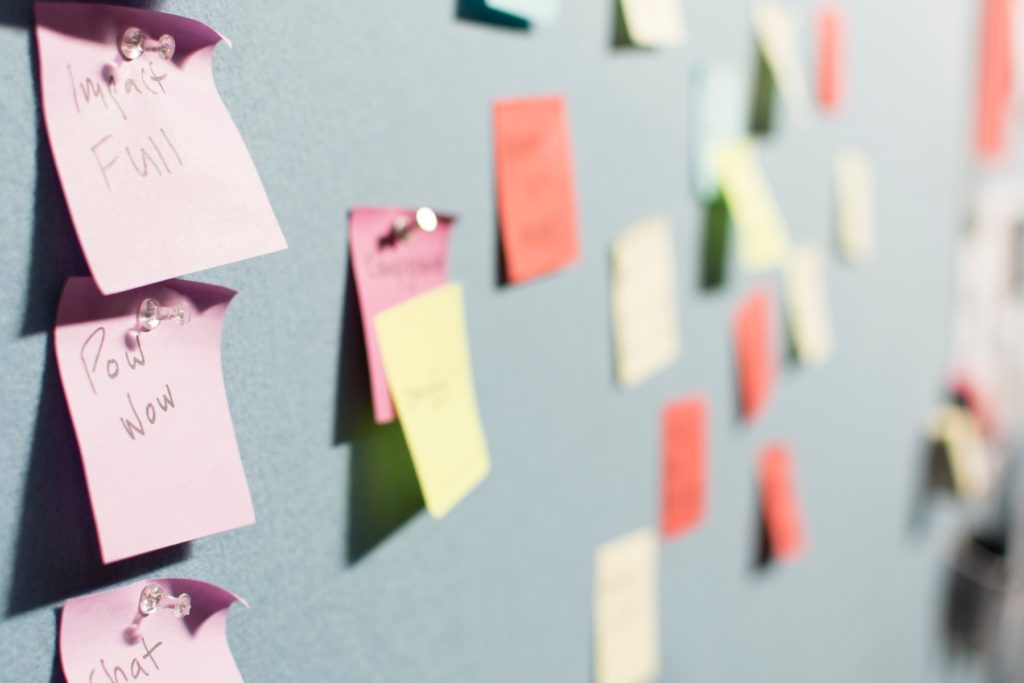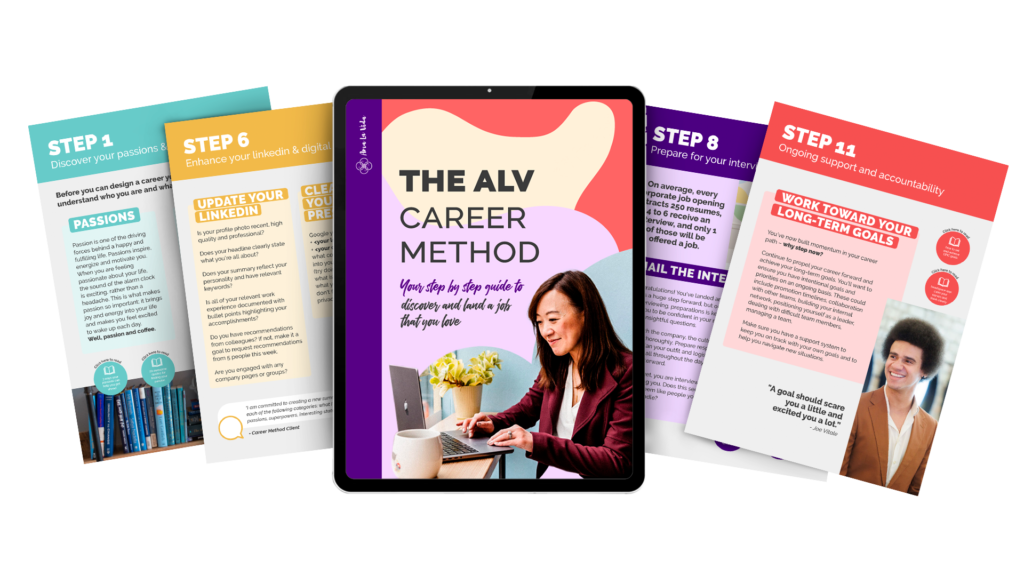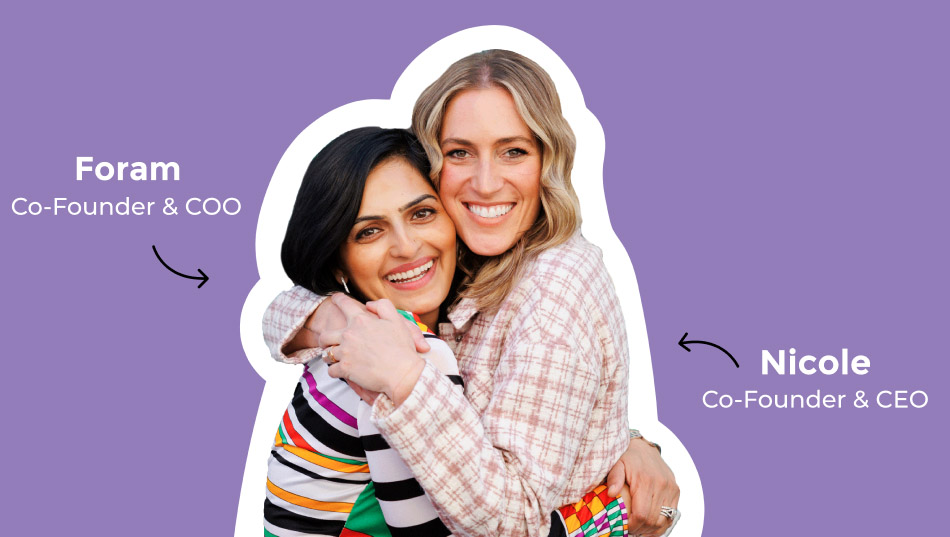What is Design Thinking and How To Apply It to Your Career

What is Design Thinking?
The term “design thinking” was coined by the global design and innovation company IDEO and is now a practice used around the world by strategists, designers, and organizations alike.
“Design Thinking is a human-centered approach to innovation—anchored in understanding customer’s needs, rapid prototyping, and generating creative ideas—that will transform the way you develop products, services, processes, and organizations.” – IDEO U
The core elements of design thinking are “empathy, optimism, iteration, creative confidence, experimentation, and an embrace of ambiguity and failure.” I’m here to invite, allow, and encourage you to bring all of those elements into your career exploration journey. But…how?
Below, I share four steps to guide you in applying design thinking to your career to get you thinking about wild ideas, embracing failure (it’s a good thing!), and leaning into the unknown.
How To Apply Design Thinking To Your Career
1. Frame It as a Question
It’s so common for many of my clients to want to know all the answers, and sometimes they get so stuck in finding the answer that they don’t realize they don’t even really know what the question is.
There are 3 simple steps to framing a question:
First Step:
Make a list of all the issues you can identify with your current work + life situation. Don’t worry about it being messy, just write out all the issues you can think of. Your list may look like this:
- Work too many hours
- Don’t have time to workout
- Feel undervalued at work
- Feeling unmotivated
- Don’t really know what I want to do
- Not sure what I’m good at
- Work is getting in the way of my personal life
- I dread Mondays
After you’re done creating your list of issues… TAKE A DEEP BREATH… feels good, doesn’t it? Okay, let’s dive back in.
Second step:
Take all the issues you listed and narrow it down to one single problem statement. Why? It’s easy for us to get caught up in ALL of the things that are wrong and we miss the opportunity to get at the core of what’s bugging us. Take some time to review your statements and create a problem statement.
Problem Statement: I have been following the path I thought was right my whole life and now I am in a job that drains my energy and is not using my skills, but I don’t know what it is I want to do with my life. I feel lost and it is getting in the way of my personal life.
Third Step:
You want to take your problem and frame it as a question. In design thinking, the usual format is asking a “How might we…?” question; since your career is about you, try asking a “How might I…?” question. Your question can focus on any of the following:
- Add more good: How might I find more opportunities for joy in my work?
- Remove the bad: How might I transition into a different role?
- Explore the opposite: How might I make Mondays something to look forward to?
- Question an assumption: How might I find fulfillment in something other than work?
- Go after adjectives: How might I make work energizing and motivating?
What’s your How Might I… question?

2. Generate Ideas
Now that you’ve got your question, let’s move on to generating possible answers!
Brainstorming is a key step in design thinking because it allows you to come up with a limitless amount of ideas. Most of the time, when we feel stuck, it’s because we are approaching things from a scarcity mindset or we’re running one scenario in our minds even if it doesn’t make sen to us.
Basic rules of brainstorming that you need to keep in mind before you jump in:
- Defer Judgment: This is a judgment-free zone; don’t start analyzing an idea, saying whether it’s good or bad, or jumping steps ahead. Just let them out.
- Encourage Wild Ideas: No idea is too crazy. Bring you wildest ideas, even (read: especially) if they seem impossible, bold, or scary.
- Yes AND: Try to use “and” instead of “but,” it encourages positivity and inclusivity and leads to tons of ideas. At this stage, every idea is viable, make sure you build on each idea to create more.
- Stay Focused on the Topic: It may be easy to start thinking about other things connected to your issue and get carried away. Continue to check in during brainstorming: “is this trying to answer my How Might I… question?” If not, leave it for another day!
- Be Visual: Use colored markers and Post-its. NOTE: The post-it’s are really important (read more below)
- Go for Quantity: Try and get as many ideas as you possibly can.
For your brainstorming, I recommend carving out 30 minutes of uninterrupted time. Play some music, stand up, and use a wall or whiteboard to keep your post-it’s organized. After you’re done, take your post-it’s and sort them by common themes or topics. This will help narrow down your many ideas into smaller, concise groupings.
3. Make Ideas Tangible
One of the most common things I hear my clients struggle with is “the unknown” of making a career transition. They’re used to their lives, whether they like them or not, and the fear of not knowing what the future holds completely paralyzes them. In design thinking, prototypes are defined as an early sample, model, or release of a product built to test a concept or process. So, how do you create a prototype (or 2!) for your career plans? Cue the Odyssey Plans.
The idea behind Odysseys Plans was formed by Bill Burnett and Dave Evans of Standord’s D.School.
The theory behind is that there is no one right way to live your life, no one single path that will give you everything you’re looking for, and the truth is that you can find happiness and fulfillment in many different life scenarios. The purpose of making Odyssey Plans is to create 3 alternative versions of your life that you could lead in the next 5 years.
Odyssey Planning creates a space for you to play in the possibilities and lean into the unknown.
Here’s how it works:
- One – That Thing You Do: Draw/write out your current plan or existing idea for how life will look for the next five years.
- Two – That Thing You’d Do If Thing One Were Suddenly Gone
- Three – The Thing You’d Do or Life You’d Live if Money or Image Were No Object: This time is for some pie in the sky thinking. This one is so important and I want to encourage you to really leave logic/judgement out of this. Imagining this alternative can be very useful in the overall exploration.
For each plan, you’ll want to have:
- A visual/graphic timeline. Include personal and non career events as well.
- A title for each option in the form of a six-word headline describing life.
- Questions that this alternative is asking (around 2-3 for each) Think: What kinds of things will you want to test and explore in each alternative version of your life?
- A “dashboard” where you can gauge the following (note: the answers to these don’t all have to be yes, it’s okay if the plans vary in all of these, that’s part of the process):
- Resources (do you have the objective resources – time, money, skills, contacts – you need to pull off this plan?
- Liability (are you hot or cold or warm about your plan?)
- Confidence (are you feeling full of confidence or pretty uncertain about pulling this off?)
- Coherence (does it make sense within itself? Is it consistent with your values and passions)?
You can use this template from the book “Designing your Life” as a guide.

4. Test to Learn
Another important design thinking value is to have a bias towards action, which means that you don’t just think about something, but you act and experiment. After your brainstorm ideas and possible answers to your question and prototype alternatives via your Odyssey Plans, the next step is to actually test those ideas out! When it comes to career and life design, testing can look like:
- Informational Interviews
- Taking a class in a field that interests you
- Sharing your business idea and ask for feedback
- Launching a blog or a podcast
- Volunteering or starting a side gig
Ultimately, you’re trying to answer the question: How can you test out elements of a job or career path that interest you?
Embrace the Mess
On a final note, design thinking is based on the idea that failure is GOOD. If we let it, it teaches things about ourselves, our values, our strengths, and our passions. If we ask “why” when we fail, we can figure out what’s getting in the way and set up structures that support us in the future. Design thinking is rooted and biased towards action because it’s so much easier to get stuck in our own heads. Instead, design thinking encourages us to put action into our ideas, no matter how small, so we can, in the words of John C. Maxwell, “Fail early, fail often, but always fail forward.”








